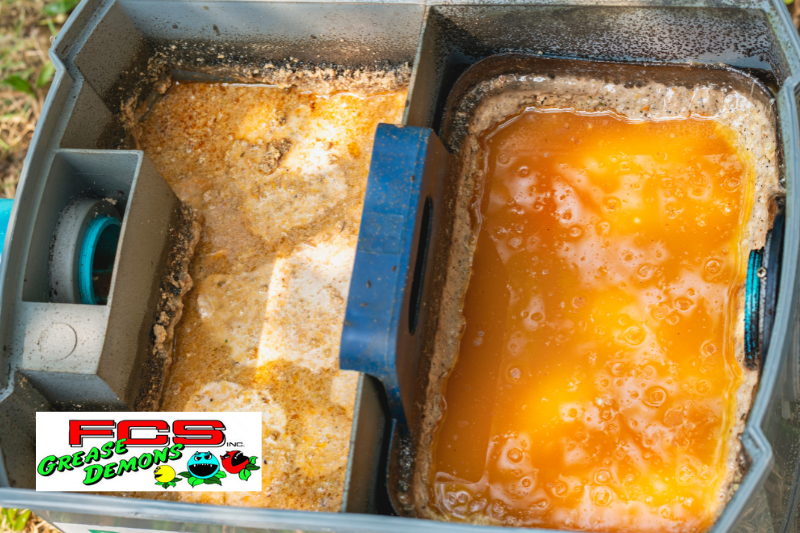How Often Should Grease Traps Be Cleaned?
Grease traps are essential components in commercial kitchens, especially in restaurants and food service businesses. They play a crucial role in preventing fats, oils, and grease (FOG) from entering the plumbing system and causing clogs or damage to the municipal sewer lines. However, grease traps require regular maintenance to function effectively, and neglecting this important task can lead to costly problems for your business. This blog post will explore how often grease traps should be cleaned, the factors that influence cleaning frequency, and why regular maintenance is vital for your restaurant or business.
The Role of Grease Traps in Your Business
Grease traps are designed to capture FOG before they enter the plumbing system. When wastewater from the kitchen flows into the grease trap, it slows down, allowing the fats, oils, and grease to cool and solidify. The lighter FOG floats to the top, while heavier food particles settle at the bottom. The remaining wastewater flows out of the trap and into the sewer system.
Without a properly functioning grease trap, FOG can build up in the pipes, leading to clogs, backups, and even damage to the sewer infrastructure. This not only disrupts your business operations but can also result in fines from local authorities for non-compliance with grease disposal regulations. Regular grease trap cleaning is essential to prevent these issues and ensure the smooth operation of your restaurant or food service business.
How Often Should Grease Traps Be Cleaned?
The frequency of grease trap cleaning depends on several factors, including the size of the trap, the volume of grease produced, and local regulations. While there is no one-size-fits-all answer, industry standards recommend cleaning grease traps at least every one to three months. However, some businesses may require more frequent cleanings depending on their specific circumstances.
Here are some key factors that influence how often your grease trap should be cleaned:
- Volume of Business: The amount of grease your restaurant or food service business produces will directly impact how often your grease trap needs to be cleaned. High-volume establishments, such as busy restaurants, fast-food chains, and large catering companies, typically need more frequent grease trap cleaning compared to smaller businesses with lower grease output.
- Type of Food: The type of food your business prepares can also affect grease trap maintenance. For example, restaurants that fry a lot of food or use large quantities of oils and fats will generate more FOG, requiring more frequent cleanings. On the other hand, establishments that focus on lighter fare, such as salads or baked goods, may not produce as much grease.
- Size of the Grease Trap: The size of your grease trap also determines how often it should be cleaned. Larger grease traps can hold more FOG and may require less frequent cleaning, while smaller traps will fill up faster and need to be emptied more often. However, even if your grease trap is large, it’s important not to let it go too long between cleanings, as buildup can still occur over time.
- Local Regulations: Many municipalities have specific regulations regarding grease trap maintenance and cleaning frequency. In some areas, businesses are required to clean their grease traps on a regular schedule, such as every 90 days, to remain in compliance with local codes. Failing to adhere to these regulations can result in fines and penalties, so it’s important to be aware of the requirements in your area.
- Signs of a Full Grease Trap: In addition to regular maintenance, it’s important to pay attention to signs that your grease trap may be full and in need of cleaning. These signs include slow drainage, foul odors coming from the drains, or backups in the plumbing system. If you notice any of these issues, it’s time to schedule a grease trap cleaning, even if it hasn’t been that long since the last service.
The Importance of Regular Grease Trap Cleaning
Regular grease trap cleaning is essential for the health and safety of your business. Neglecting this important task can lead to a range of problems, including:
- Clogs and Backups: When grease traps are not cleaned regularly, FOG can build up in the pipes and cause clogs. This can result in slow drainage, backups, and even complete blockages in the plumbing system. A clogged grease trap can disrupt your business operations, leading to downtime and lost revenue.
- Foul Odors: As grease and food particles accumulate in the grease trap, they can begin to decompose, causing unpleasant odors to emanate from your drains. These odors can negatively impact the dining experience for your customers and create an unsanitary environment in your kitchen.
- Health and Safety Hazards: A neglected grease trap can become a breeding ground for bacteria and pests, posing health and safety risks to your employees and customers. Regular cleaning helps prevent these issues and ensures that your business meets health code standards.
- Environmental Impact: FOG that enters the sewer system can cause environmental damage by clogging pipes and contaminating water sources. By keeping your grease trap clean, you help protect the environment and reduce your business’s impact on the local ecosystem.
- Avoiding Fines and Penalties: Many local governments have strict regulations regarding grease trap maintenance. Failing to comply with these regulations can result in fines, penalties, and even the suspension of your business license. Regular cleaning helps you stay in compliance and avoid costly legal issues.
Best Practices for Grease Trap Maintenance
To keep your grease trap functioning properly and avoid issues, it’s important to follow best practices for maintenance. Here are some tips to ensure your grease trap stays in good condition:
- Schedule Regular Cleanings: Set up a regular cleaning schedule based on your business’s needs and local regulations. Most grease traps should be cleaned at least every one to three months, but high-volume businesses may require more frequent service.
- Hire a Professional Service: Grease trap cleaning is a dirty and complex job that requires specialized equipment and knowledge. Hiring a professional grease trap cleaning service ensures that the job is done correctly and that your trap is thoroughly cleaned and inspected for any issues.
- Keep a Maintenance Log: Maintaining a log of your grease trap cleanings can help you track when the trap was last serviced and when it’s due for the next cleaning. This log can also serve as documentation for local authorities in case of an inspection.
- Train Your Staff: Educate your staff about proper grease disposal practices to prevent excess FOG from entering the grease trap. This includes scraping food waste into the trash before washing dishes and avoiding pouring oils and fats down the drain.
Contact FCS, Inc For Grease Trap Cleaning
Grease trap maintenance is a critical part of running a successful restaurant or food service business. By understanding how often your grease trap should be cleaned and following best practices for maintenance, you can prevent clogs, backups, and other costly problems. Regular grease trap cleaning not only keeps your business running smoothly but also ensures compliance with local regulations and protects the environment. If you’re unsure about your grease trap cleaning needs, consult with a professional service to develop a maintenance schedule that’s right for your business.
At FCS, Inc., we specialize in grease trap cleaning and maintenance for businesses of all sizes. Our team of experienced professionals is here to help you keep your grease trap in top condition and ensure the smooth operation of your kitchen.

